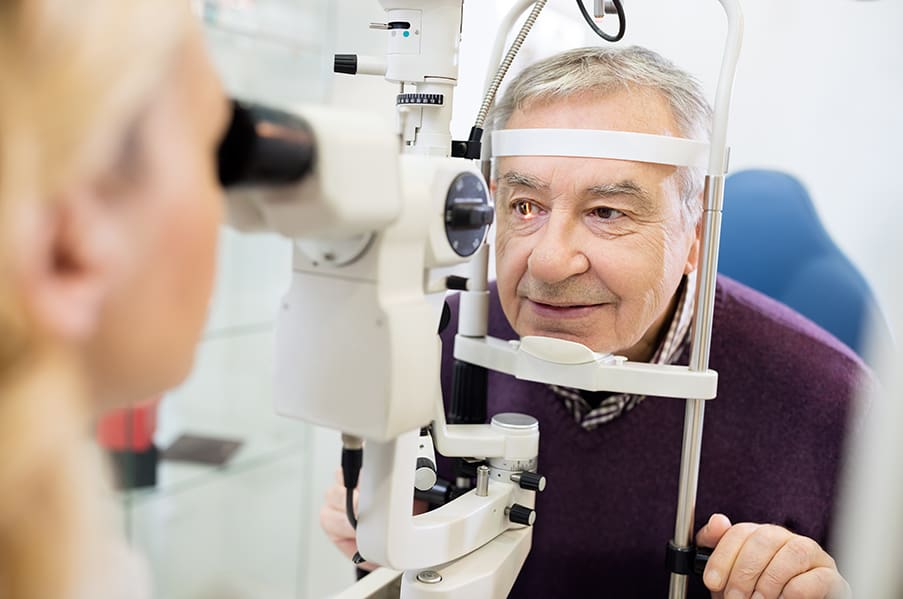
By AkersArt
Ask the Expert: Geographic Atrophy

Matthew Cunningham, MD, FASRS
Vitreoretinal Specialist with Florida Retina Institute
How to identify Geographic Atrophy?
Vision loss can sneak up you. Some vision changes are normal as we age but can be signs of a more serious condition.
Age-related Macular Degeneration (AMD) is the leading cause of vision loss in people over the age of 60. Some patients with advanced AMD will develop geographic atrophy, which involves permanent damage and loss of tissue in the center of the retina, known as the macula.
“If you think of the retina as the film of the camera, this is in the center of that film,” says Matthew Cunningham, MD, FASRS, a vitreoretinal specialist and Clinical Trial Director with Florida Retina Institute.
“Geographic atrophy is serious because of its progressive nature and its location in the macula. It’s basically missing tissue of the retinal pigment epithelial layer,” explains Dr. Cunningham. “This causes difficulty reading, driving, and takes a toll on the overall visual acuity in our patients with this condition.”
Symptoms of geographic atrophy may include:
• Loss of vision or blurry spots in the central field of vision
• Difficulty reading in low light
• Colors appear faded
• Trouble seeing fine details
Contributing factors include family history, smoking, extensive sun exposure, obesity, heart disease, diabetes, and high blood pressure.
“The problem with geographic atrophy is that it spreads. The patient’s vision will progressively worsen as it involves the center of the macula, known as the fovea,” says Dr. Cunningham.
The condition can be diagnosed with a dilated eye exam, which is recommended annually for patients over the age of 65. If you have been diagnosed with AMD, you may need a dilated eye exam every six months depending on the severity.
“We now have two medications that give retina specialists treatment options for patients with the devastating condition known as geographic atrophy,” notes Dr. Cunningham. “This is exciting because for so many years, we told patients we have nothing to offer. At least now we have something that can slow this process.”
Syfovre® has been available for about six months. Izervay™ recently received FDA approval and becomes available this September.
“These are intravitreal injections that are done every four to eight weeks. While they are not curative, the goal of treatment is to slow down the rate of geographic atrophy spread,” says Dr. Cunningham. “It does not reverse damage already done, but the fact that we can potentially slow down the process is exciting for retina specialists around the world.”
Up to 20 percent of patients with AMD will develop geographic atrophy. These new therapies can hopefully maintain their vision longer. More clinical trials are underway and retina specialists are optimistic about additional treatment options in the future.








